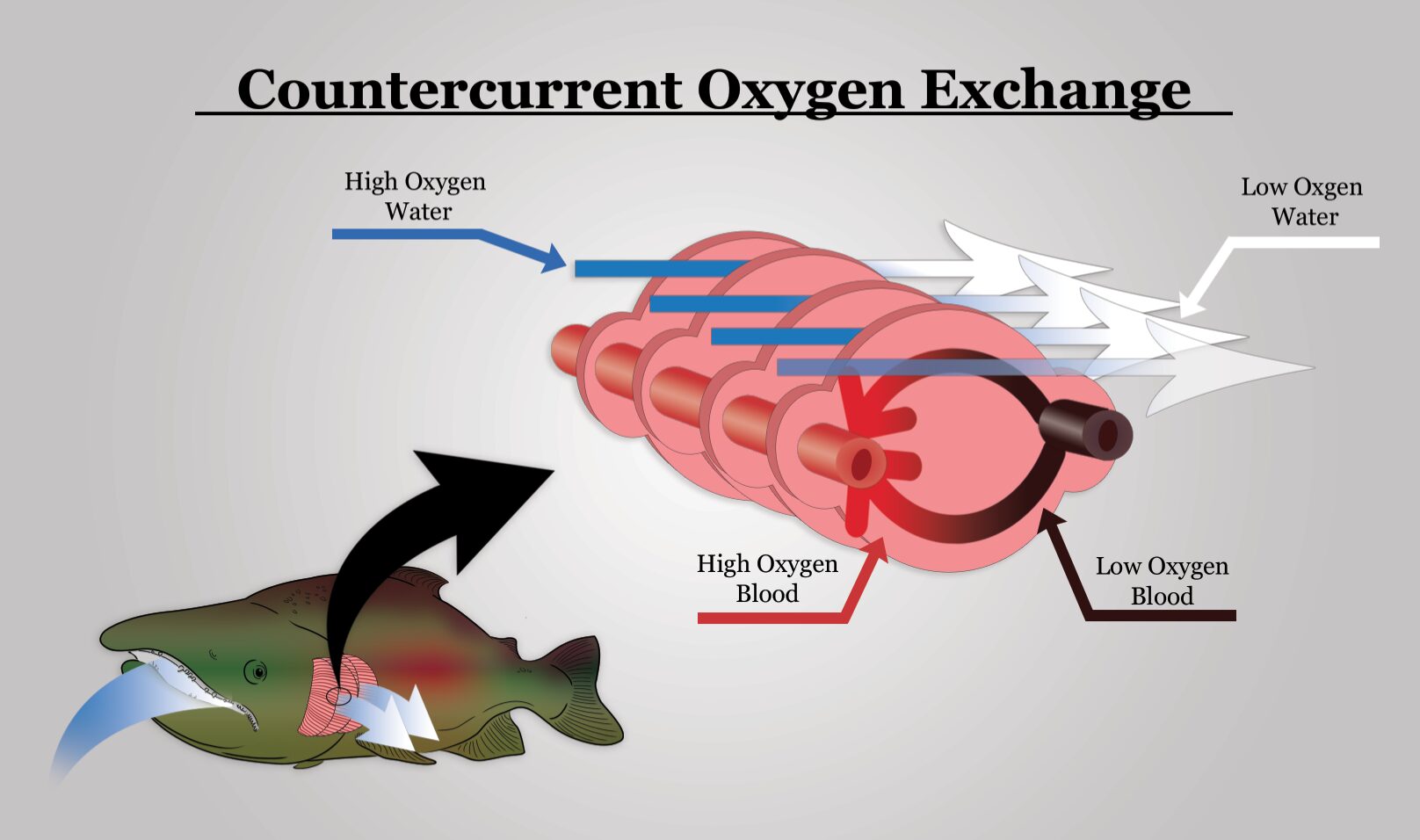
Countercurrent exchange is a fascinating biological process that plays a crucial role in various systems within living organisms. But what exactly is countercurrent exchange? In simple terms, it's a mechanism where two fluids flow in opposite directions, allowing for efficient transfer of heat or substances between them. This process is vital in many biological functions, such as oxygen exchange in fish gills, heat regulation in mammals, and nutrient absorption in kidneys. Understanding countercurrent exchange can help us appreciate how life adapts to different environments and maintains balance. Let's dive into 27 intriguing facts about this essential biological phenomenon!
What is Countercurrent Exchange?
Countercurrent exchange is a fascinating biological mechanism that helps organisms maximize efficiency in various physiological processes. This system involves the exchange of substances between two fluids flowing in opposite directions. Let's dive into some intriguing facts about this process.
-
Countercurrent exchange is crucial in fish gills, allowing them to extract oxygen from water efficiently.
-
In the kidneys, this mechanism helps concentrate urine, conserving water in the body.
-
Birds use countercurrent heat exchange in their legs to minimize heat loss in cold environments.
-
The process is vital for maintaining temperature gradients in many animals, including mammals.
How Does Countercurrent Exchange Work?
Understanding the mechanics behind countercurrent exchange can be quite enlightening. It involves a gradient that facilitates the transfer of substances between two opposing fluid streams.
-
Blood vessels in fish gills run in opposite directions to water flow, maximizing oxygen absorption.
-
In the kidneys, the loop of Henle uses countercurrent exchange to create a concentration gradient, aiding in water reabsorption.
-
Some insects use this mechanism in their respiratory systems to enhance gas exchange efficiency.
-
Heat exchangers in whales' tongues use countercurrent flow to maintain body temperature in cold waters.
Examples in Nature
Countercurrent exchange isn't limited to just a few species. It appears in various forms across the animal kingdom, showcasing nature's ingenuity.
-
Penguins use countercurrent heat exchange in their flippers to keep warm in icy waters.
-
Certain reptiles employ this mechanism in their limbs to regulate body temperature.
-
The rete mirabile, a complex of arteries and veins, uses countercurrent exchange in some fish to regulate buoyancy.
-
Insects like bees use countercurrent exchange in their flight muscles to maintain optimal temperature for flight.
Human Applications
Humans have also harnessed the principles of countercurrent exchange in various technologies and medical applications.
-
Dialysis machines use countercurrent flow to remove waste products from blood efficiently.
-
Industrial heat exchangers utilize this mechanism to transfer heat between fluids, improving energy efficiency.
-
Some artificial lungs employ countercurrent exchange to enhance oxygenation of blood.
-
Countercurrent chromatography is a technique used in laboratories for separating chemical compounds.
Benefits of Countercurrent Exchange
The advantages of countercurrent exchange are numerous, making it a preferred mechanism in both nature and technology.
-
It maximizes the efficiency of substance transfer, whether it's gases, heat, or solutes.
-
This mechanism helps organisms conserve energy by optimizing physiological processes.
-
Countercurrent exchange allows for the maintenance of stable internal environments, crucial for survival in extreme conditions.
-
It enhances the ability of organisms to adapt to varying environmental conditions.
Challenges and Limitations
Despite its many benefits, countercurrent exchange also has its challenges and limitations.
-
The system requires precise anatomical structures to function effectively.
-
Any disruption in the flow of fluids can significantly impact the efficiency of the exchange process.
-
In some cases, the energy cost of maintaining countercurrent systems can be high.
-
The mechanism may not be as effective in environments with minimal temperature or concentration gradients.
Future Research and Innovations
Ongoing research continues to explore new applications and improvements in countercurrent exchange systems.
-
Scientists are investigating ways to enhance artificial organs using countercurrent principles.
-
Innovations in industrial processes aim to improve energy efficiency through better heat exchangers.
-
Research on climate adaptation in animals focuses on understanding and leveraging countercurrent exchange mechanisms.
Countercurrent exchange remains a testament to nature's ingenuity and a source of inspiration for human innovation.
Final Thoughts on Countercurrent Exchange
Countercurrent exchange is a fascinating process found in nature and technology. It maximizes efficiency by allowing two fluids to flow in opposite directions, enhancing heat or substance transfer. This principle is crucial in fish gills for oxygen absorption, in bird lungs for efficient breathing, and in human kidneys for concentrating urine. Engineers also use it in heat exchangers and industrial processes to save energy and improve performance.
Understanding this concept can deepen your appreciation for the intricate designs in nature and the clever solutions in engineering. Whether you're a student, a curious mind, or someone interested in science, knowing about countercurrent exchange adds a valuable piece to your knowledge puzzle. Keep exploring, stay curious, and remember, the world is full of amazing processes waiting to be understood.
Was this page helpful?
Our commitment to delivering trustworthy and engaging content is at the heart of what we do. Each fact on our site is contributed by real users like you, bringing a wealth of diverse insights and information. To ensure the highest standards of accuracy and reliability, our dedicated editors meticulously review each submission. This process guarantees that the facts we share are not only fascinating but also credible. Trust in our commitment to quality and authenticity as you explore and learn with us.
